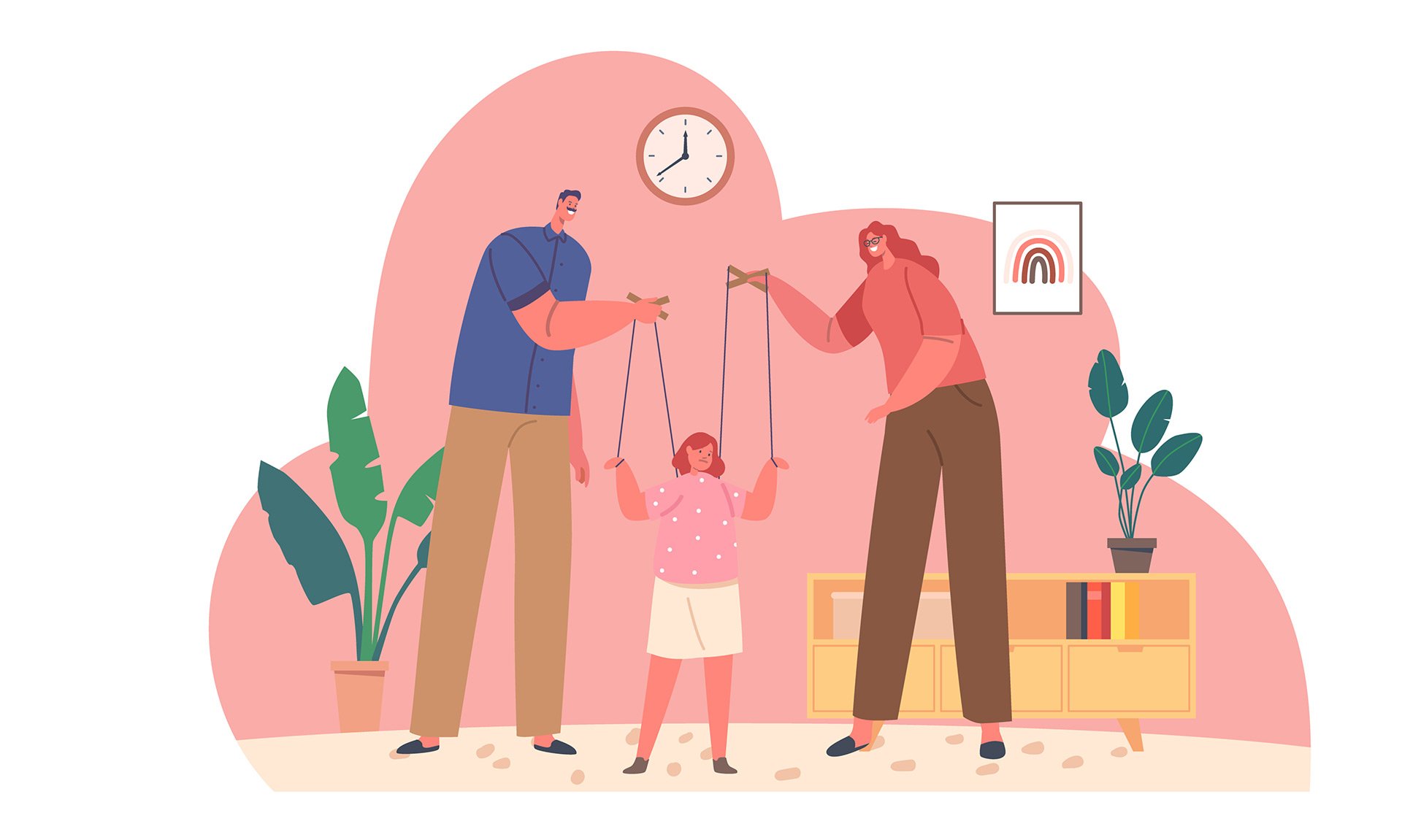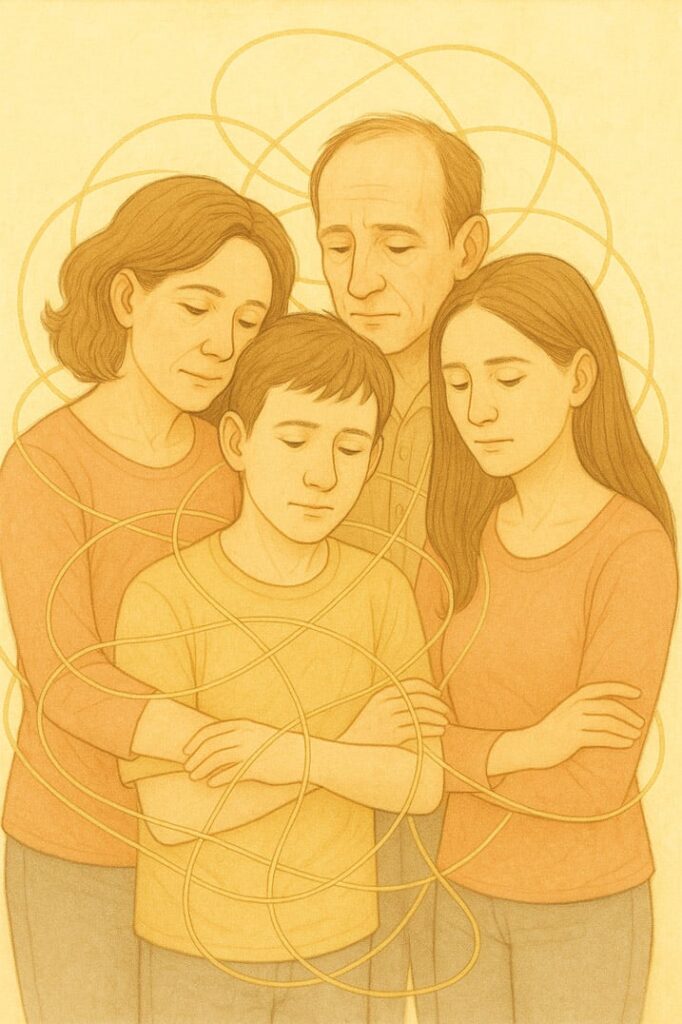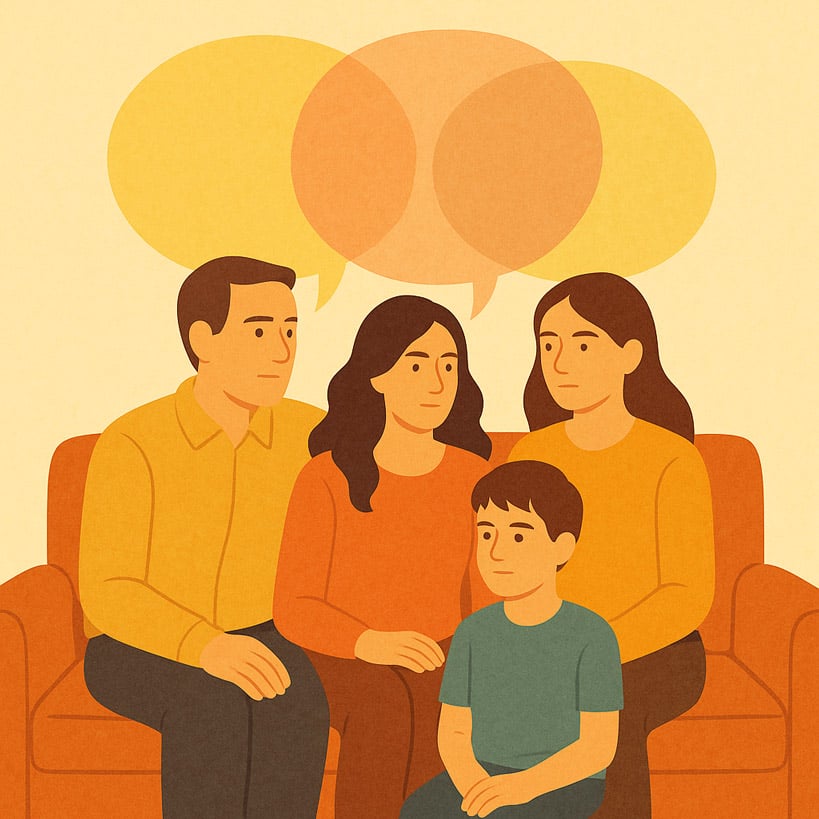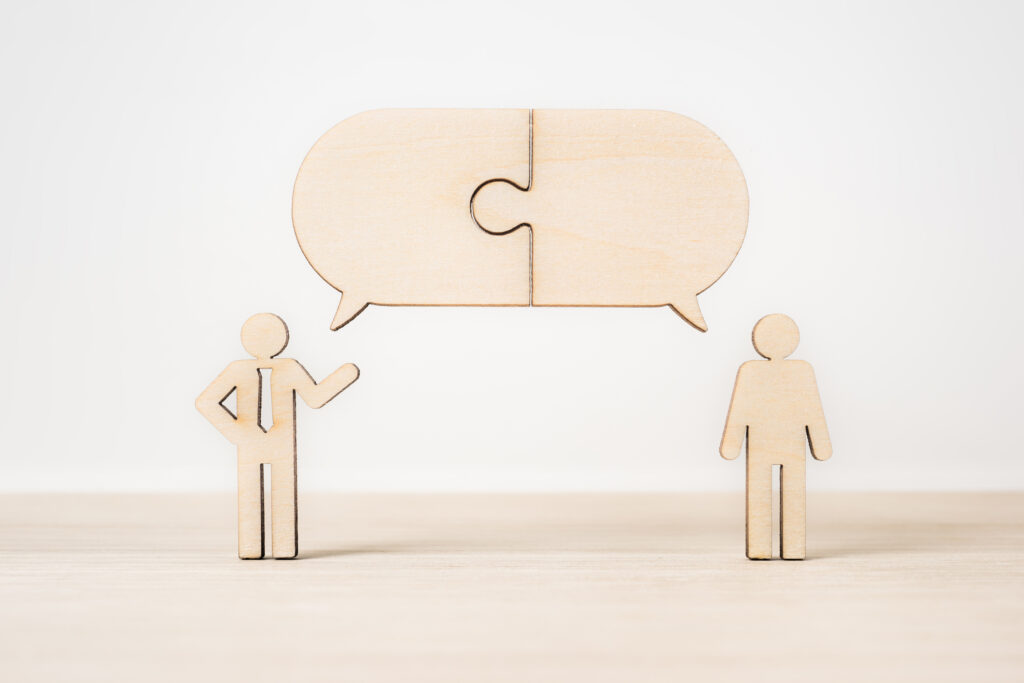Enmeshment is a complex psychological concept that describes relationships characterized by blurred personal boundaries and excessive emotional interdependence. This often manifests within family systems or romantic partnerships, where individuals lose a sense of self in the emotional needs of others.
This dynamic can lead to a range of issues, such as difficulty in making independent decisions, a lack of personal identity, and emotional struggles. It’s important to recognize and address these patterns to foster healthier, more autonomous relationships.
Understanding and healing from enmeshment is just crucial for individual well-being and the health of relationships. This comprehensive blog aims to explore various facets of this dynamic, offering insights and practical strategies to overcome and heal from its impacts.
We will delve into the nuances of overcoming enmeshment, breaking its persistent cycle, recovering from its effects, treating related trauma, and identifying effective therapies, each tailored to guide you on this journey of self-discovery and relational health.
How Do You Battle Enmeshment?
Enmeshment healing begins with recognizing its presence in a relationship. It often requires a deep dive into understanding one’s emotional entanglements and how they affect their sense of self. The process involves different steps, each important for establishing a healthier relational dynamic.
1. Developing Self-Awareness
Individuals can recognize this dynamic by being introspective or getting feedback from others. They can reflect on their relationships and notice where their emotional health is closely tied to others. It can be useful to ask trusted friends for their perspectives or turn to professionals who can provide objective insights into their relationship dynamics.
2. Boundary Setting
Establishing clear boundaries in relationships is one of the most important steps. It’s up to the individual to define what they’re comfortable with emotionally, psychologically, and physically. They can do their best to communicate these boundaries to others clearly and firmly, ensuring they understand their limits.
3. Communication Skills
The affected individual might find it useful to get better at assertive communication. They can practice expressing their needs and boundaries without being aggressive or too passive. This is a skill that takes time to practice, so it’s important to keep in mind that it can’t be developed overnight.
4. Independence Cultivation
Another important step in healing enmeshment trauma is to pursue personal interests and goals independent of others. Individuals can try their hand at activities that reflect their personal preferences and passions, which reinforce their identity and reduce emotional dependency.

How Do You Break The Cycle Of Enmeshment?
If someone wants to break this cycle, it’s not enough to just recognize and address it. A fundamental change in the relationship dynamics has to take place. Although this process can be very challenging, it’s essential for establishing long-term healthy relationships.
1. Consistent Boundary Enforcement
It’s important to regularly reinforce personal boundaries. This might include frequent reminders to others about individual needs and limits. Being vigilant against slipping back into old patterns is key, as is preparing to stand firm against resistance or challenges from others.
2. Role Reassessment and Modification
A critical step is to reassess and modify roles within the relationship. For instance, stepping back from a caretaker role allows others to take responsibility for their emotions and decisions, fostering a healthier, more balanced dynamic.
3. Education on Healthy Relationships
There are many resources out there that can help people understand healthy relational dynamics. Engaging with books, workshops, or therapy sessions can provide insight and tools on how to heal from enmeshment and foster healthier relationships.
4. Building External Support Systems
Establishing relationships outside of these unhealthy connections is one of the most important parts of pulling away from this dynamic. Joining clubs, groups, or forming new friendships that offer different perspectives and respect individuality can be instrumental in breaking the cycle.
5. Self-Compassion and Patience
Recognizing that this process is gradual and might involve setbacks is important. This journey will be easier to handle with a lot of self-compassion and patience.

How Do You Recover From Enmeshment?
Recovery from this harmful dynamic can feel like stepping into a new chapter of personal discovery and growth, where the focus shifts from intertwined relationships to the richness of one’s individual life. It’s a journey marked by learning to appreciate one’s unique qualities and forging a path defined by personal choices and aspirations, rather than the dictates of others.
Central to this journey is the development of a nurturing relationship with oneself. This involves engaging in an ongoing, compassionate self-dialogue, discovering the joys of solitude, and appreciating one’s own company. The individual creates a space for self-understanding, where they can explore and embrace personal preferences and passions.
Another important part of learning how to heal enmeshment trauma is embracing vulnerability. This means the individual can allow themselves to feel a range of emotions, including those previously ignored or suppressed. This process helps in building trust in one’s emotional instincts, recognizing them as valid and insightful.
Redefining personal success and fulfillment plays a significant role too. This involves setting goals that resonate with individual values and celebrating every achievement as a step towards a more authentic self, regardless of its scale.
How Do You Treat Enmeshment Trauma?
Healing enmeshment trauma requires a comprehensive approach that addresses the emotional and psychological aspects of an individual’s well-being. This approach is usually a combination of professional guidance and personal efforts.
1. Therapeutic Approaches
Engaging in specialized therapies such as Cognitive Behavioral Therapy (CBT) or Eye Movement Desensitization and Reprocessing (EMDR) can be highly effective in addressing the root causes of trauma. These therapies help individuals process their experiences and reframe them in a healthier context.
2. Support Network Development
Building a strong support network is a vital part of overcoming enmeshment. Forming connections with friends, family members, or support groups who understand the challenges of this dynamic can provide crucial emotional support and a sense of belonging.
3. Self-Care and Relaxation
Incorporating self-care practices such as meditation, yoga, or engaging in hobbies can significantly help in recovery. These activities may offer relaxation and stress relief, which are important in managing symptoms of anxiety or depression that often accompany trauma.
4. Fostering Independence
Developing a sense of independence is another important part of this journey. This involves pursuing personal goals and interests that reinforce one’s sense of self, creating a distinct and healthily independent life.
5. Boundary Maintenance
Consistently maintaining and respecting personal boundaries is one of the most important parts of healing. This practice establishes a safe emotional space, allowing individuals to feel more in control of their relationships and emotional well-being.
What Is The Best Therapy For Enmeshment?
Selecting the best therapy depends on the individual’s unique needs and circumstances. However, certain therapeutic approaches have proven particularly effective in addressing the consequences of this dynamic.
1. Family Systems Therapy
This therapy is beneficial for understanding and changing dysfunctional family dynamics. It enables individuals to recognize their roles within the family and how these dynamics contribute to the dysfunction. If the whole family works together, there is a high chance that the dynamic could shift.
2. Individual Psychotherapy
Focusing on the individual’s experiences within these relationships, this therapy helps in exploring personal boundaries, identity, and emotional independence. It offers a space for deep self-exploration and healing.
3. Cognitive Behavioral Therapy (CBT)
CBT can be helpful for individuals who want to alter their thought patterns and behaviors. It may assist individuals in recognizing and changing negative thoughts. This might make it easier for them to establish healthier patterns of relating to others.
4. Trauma-Focused Therapies
Therapies like EMDR might be effective for healing enmeshment trauma. They focus on processing and recovering from traumatic experiences related to these dysfunctional relationships.
5. Group Therapy/Support Groups
These settings provide a community of individuals who share similar experiences. Participating in group therapy or support groups can offer unique insights, shared learning, and a sense of solidarity, which can be incredibly supportive in the healing process.

Begin Your Journey To Healing Enmeshment Trauma With PIVOT
Finding balance in connections where the lines of individuality are blurred can be an overwhelming task. PIVOT stands ready to assist you in navigating these complex waters. At our peaceful Glass House Retreat, we offer a sanctuary where understanding and growth go hand in hand. We have a time tested process to help you see your trauma and also learn to tolerate and navigate your unique experiences. Our highly trained coaches are dedicated to providing personalized support, helping you identify and address harmful patterns. With PIVOT, you’ll gain the strength and knowledge to establish healthier boundaries and foster relationships that respect your individuality. Embrace a new chapter of relational harmony and self-discovery with us today.






















